When one thinks of spices, the first few spices that pop up in their mind might differ depending on what one eats. For some, it might be just pepper, paprika and various dried herbs. For others, it might be curry powder, cumin seeds, cloves and fennel seeds.
In Ghana, our choice of spices includes both indigenous and imported spices. Just like many African cuisines, indigenous African spices are not as popular. Yes, there are the spice mixes like berbere spice or ras el hanout that are more mainstream, but there are a whole host of spices that we use to flavour our foods that many people do not talk about.
These spices are incredibly fragrant and add an authentic African taste to the food. They have very earthy undertones and are used in both sweet and savoury recipes.
Where can I buy these spices?
In terms of where to get the spices, your best bet is at an African grocery store. West Africans are well-travelled and there are many stores in North America and Europe. If you live in a city or a major town, you will be able to find an African store just with a simple google search. Please google “West African Store [insert city]” to see if one is available near you. If you are in Canada, you can check out MyChopChop (click here) for an online option. Etsy is also a fantastic location to find West African ingredients if you are in the US. Other places you can find these are Facebook marketplace and even Amazon, especially if you are in the US. There are individual links for vendors under each spice as some do not carry all the spices.
HWEDIABA (CALABASH NUTMEG)
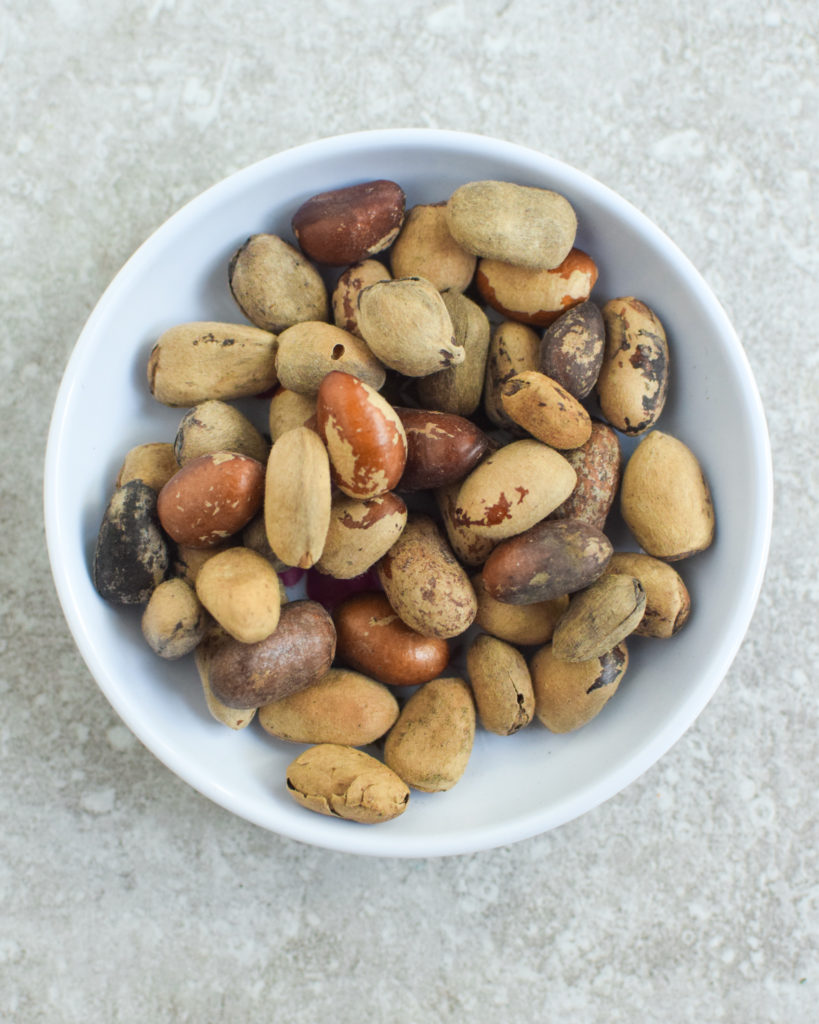
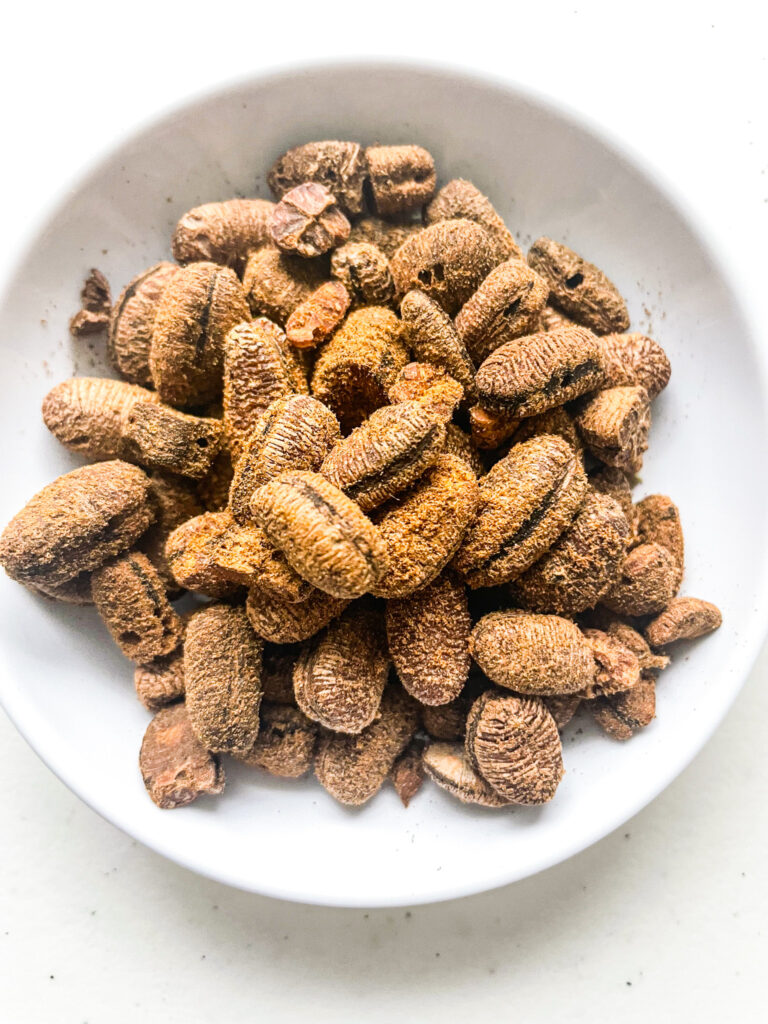
- What is it ? Calabash nutmeg is what nutmeg wanted to be but couldn’t get. It is a shelled spice that is popular in many West African dishes
- What does it taste like? It tastes and smells like a florel nutmeg with woody undertones 😅.
- What can I use it for? Anything nutmeg can be used for, calabash nutmeg can be used for. It is also perfect in savoury soups and stews. In Ghana, we use it in our tomato based stews for an extra something something.
- Sweet or Savoury? Both
- How can I use it? Most often, they are sold with the shell. You will need to roast the nutmeg for a good five minutes then use a pestle to crack it open. If the shell isn’t cracking just keep roasting till it cracks. The flesh it what is used. Refer to videos below
- Recipe Ideas: Anything that uses nutmeg, you can use calabash nutmeg. You can also put it in your soups and stews (perfect for squash soups) A little goes a long way. For the late summer season or early fall, you can add it to anything that involved cooked peaches or apples
- From my blog: Honestly any of the tomato based recipes. You can blend it with the tomatoes and onions
- Ghanaian Red Red Stew (Click Here)
- Jollof Rice (Click Here)
- Sobolo (Click Here)
- Kelewele (Click Here)
- Fermented Teff Porridge (Click Here)
- Where to buy: African store, MyChopChop (US/Canada) or on Etsy (US).
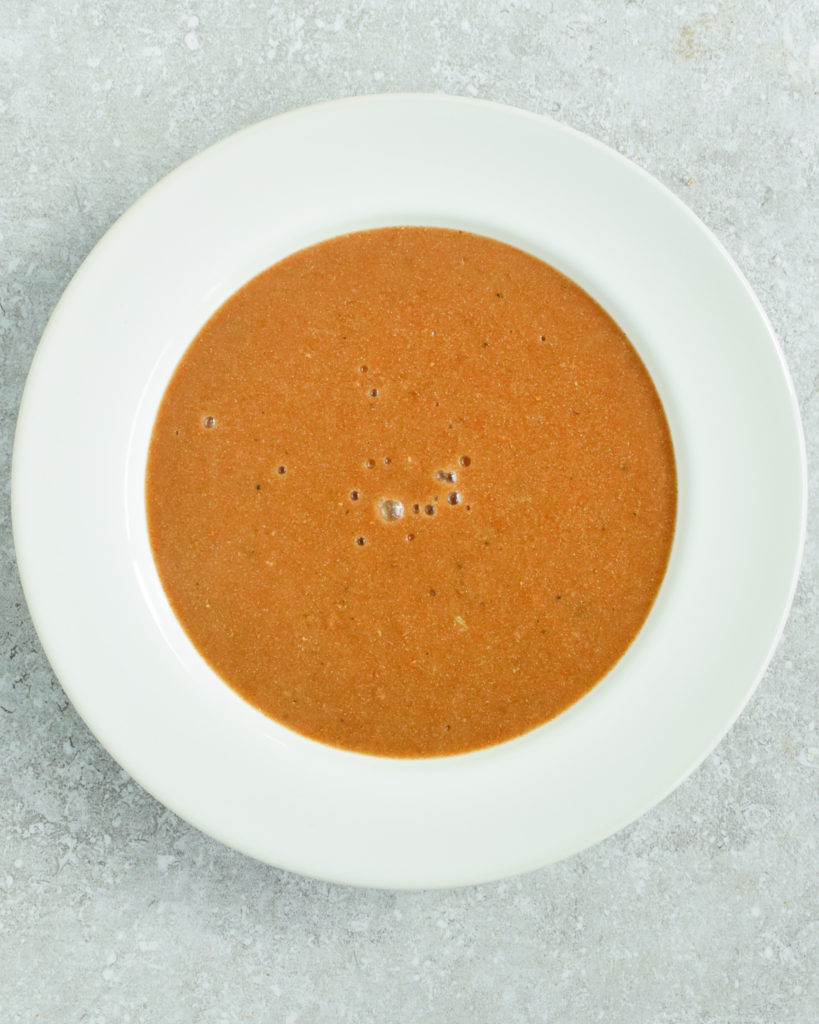
GRAINS OF PARADISE (EFOM WISA)
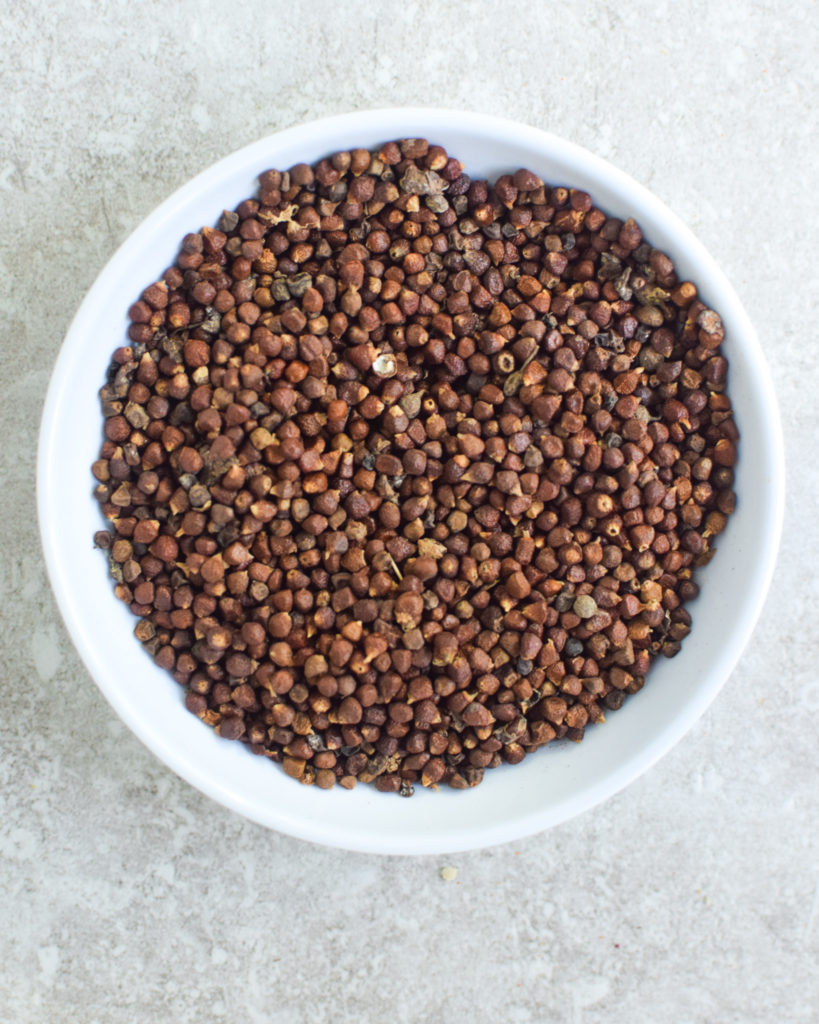
- What is it ? A fruity more fragrant seed that has similar profile to pink peppercorn. Do not confuse it with the Korarima, which is very similar in look but varies in flavour.
- What does it taste like? You can basically substitute black pepper for it
- What can I use it for? You can use it for stews and soups, you can even crush it with a pepper grinder for salads, or on top of toasts. Honestly forget black peppercorn, this is the new pepper
- Sweet or Savoury? Savoury most of the time, sweet for occasions that need black pepper
- Recipe Ideas: Anything that involves black peppercorn. Even with our spicy fermented porridge
- From my blog:
- Kelewele: You can substitute the black peppercorn for this and it is fantastic. (Click Here)
- Sobolo: You can substitute the black peppercorn for a nice fragrant heat (Click Here)
- Jollof Rice: you can include this to the spice mix and it is fantastic (Click Here)
- Where to purchase: (Your local African store), MyChopChop (US/Canada), Spice Merchant (Canada), Silk Road Spice Merchant (Canada), The Spice House (US), Serious Eats has a few American options

GUINEA CUBEB (ESORO WISA/UZIZA SEEDS)
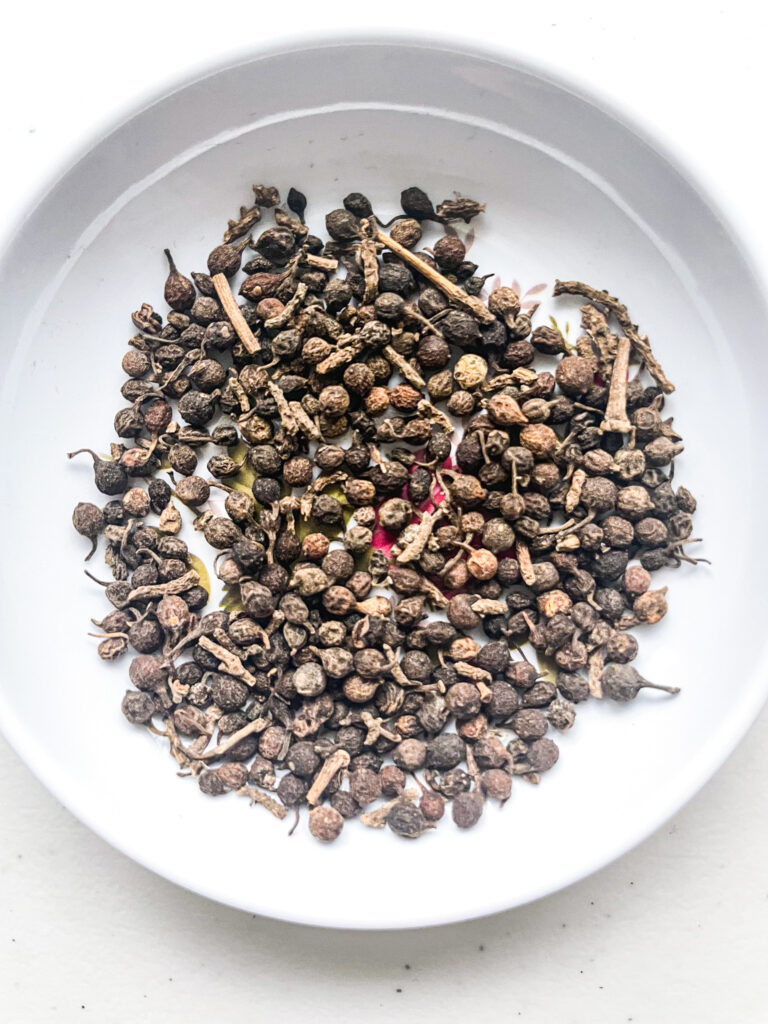
- What is it? This spice goes by many names but I have known it as esoro wisa. It is also known as local black pepper because it looks like black peppercorns with tails.
- What does it taste like? It has a sharp spicy flavour like peppercorn with almost a tart undertone. It is interesting how it tastes similar to black pepper but they are not part of the same family.
- What can I use it for? You can use it in soups and stews as well as in porridges and drinks. The leaves are consumed in many local Nigerian dishes while the seeds are more popular in Ghanaian dishes and some drinks.
- Sweet or Savoury? Savoury
- Recipe Ideas:You can use it interchangeably with black pepper
- From my blog:
- Egusi Soup
- Tatale
- Where to buy: African store near you, Etsy or MyChopChop (US/Canada)
GRAINS OF SELIM (HWENTIA)
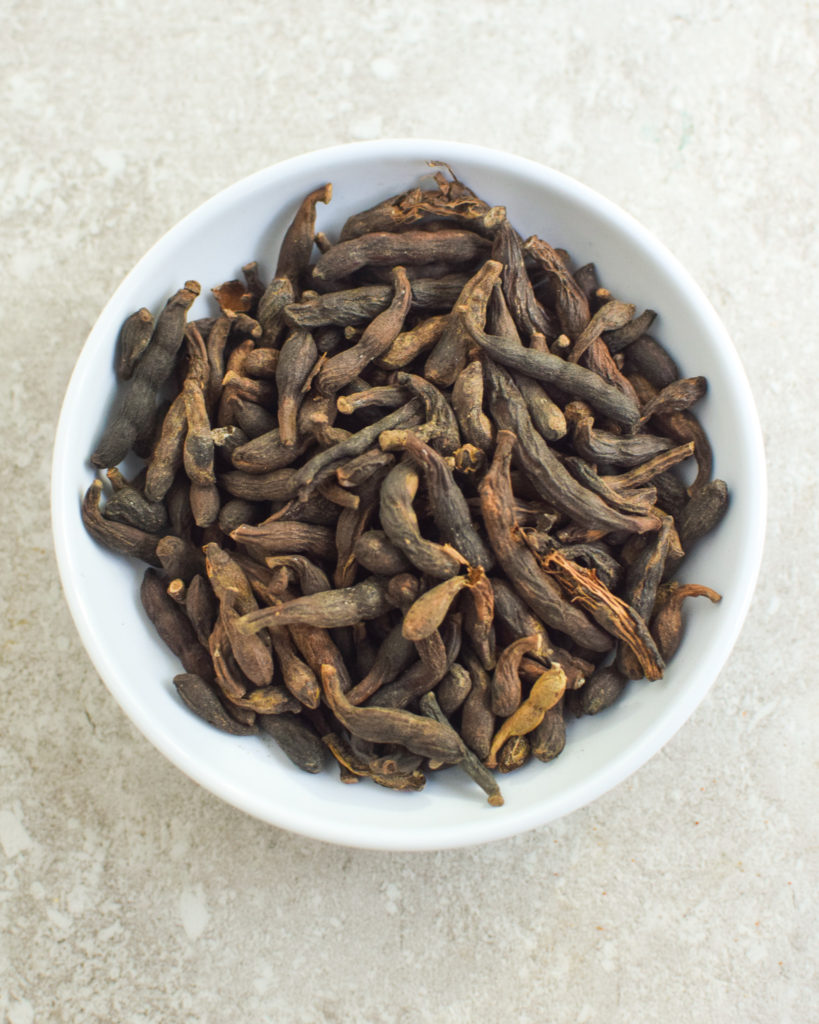
- What is it ? It is pod based spice.
- What does it taste like? The outside has a woody dry taste with bitter seeds inside
- What can I use it for? These go hand in hand with the calabash nutmeg. Whatever you can use with the calabash nutmeg, you can use with the grains of selim. A little goes a long way!!!! Unless you are blending it with for a sauce like a tomato based sauce, or fermented porridge (recipe coming soon), or just using one or two, I highly suggest keeping it whole, because if you crush too many and expose the seeds, the food can be bitter (I have learned this the hard way). You can add one or two to your oatmeal or porridge whole (do not crush) and it gives a really nice flavour. I also add a couple to a pot if I am cooking down peaches or apples (again I keep it whole). If you add it in porridge or sauce, please remove it after it is cooked. If you add in soups or stews, you can tie it with a kitchen yarn and remove it after.
- Sweet or Savoury? Both
- Recipe ideas: Perfect for porridges, really flavourful soups or stews
- From my blog:
- Kelewele: (Click Here)
- Sobolo: (Click Here)
- Fun Fact: If you have a cold or sore throat, just chew on a couple. It’s not pleasant but it helps
- Where to buy: African store near you, Etsy or MyChopChop (US/Canada), The Spice Merchant (Canada)
FERMENTED LOCUST BEANS (DAWA DAWA/IRU)
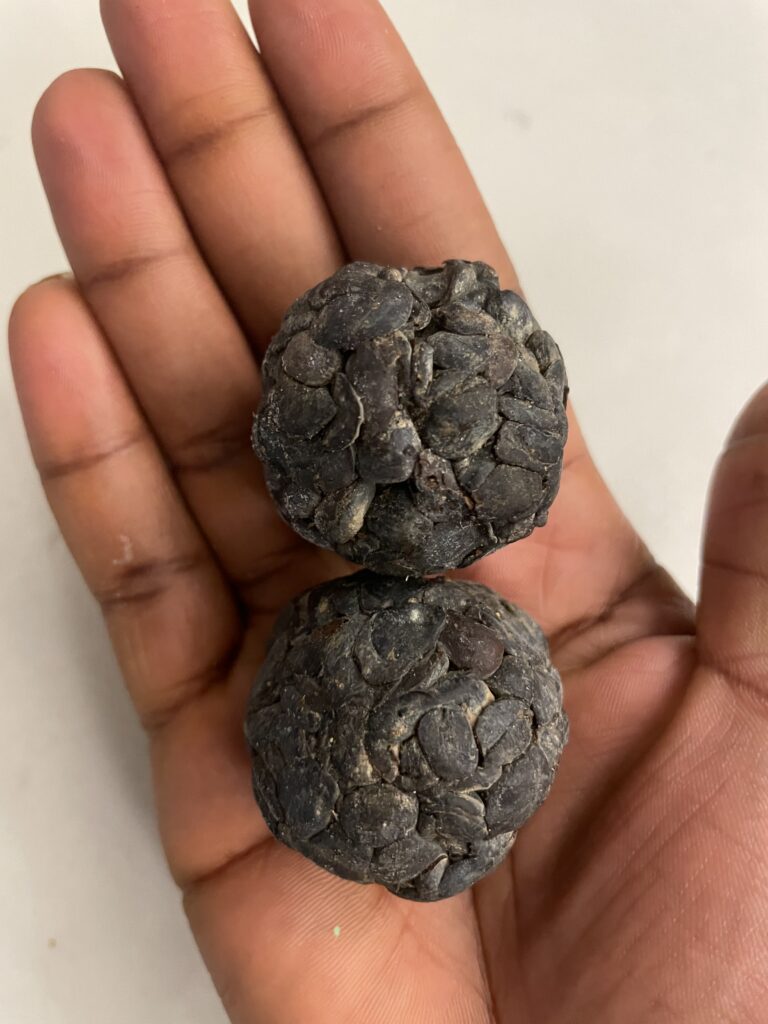
- What is it ? Dawa Dawa goes by many names across West Africa, but it is fermented locust beans. The locust beans are in the same family as carob but these are two separate things. The locust beans go through an alkaline fermentation process that gives its unique smell and flavour.
- What does it taste like? This is hard to describe. It has a very pungent meat like smell. It really gives a nice “local” smell to the dish and tricks you to thinking there is meat in the dish. I think it might be because it has been associated with so many meat based recipes that it might just be cognitive association 😅
- What can I use it for? You can use it in soups and stews to really deepen the flavour. It works really well in okra stews/soups and is helpful for vegan/vegetarian cooking. Do not be heavy handed with it; a little goes a long way
- Sweet or Savoury? Savoury
- Recipe Ideas: You can sprinkle it into soups and stews that are rich and hearty. I also highly encourage experimenting with it.
- From my blog:
- Ghanaian Groundnut Soup: Click Here
- Ghanaian Okra Stew: Click Here
- Where to buy: Besides African stores, you can purchase dawa dawa online at Burlap and Barrel (US and Canada), MyChopChop (Canada) or on Etsy (US).
- If you are curious on how Dawa Dawa is produced? Watch the Video Below
ANISE SEEDS

- What is it ? Anise seeds is a spice not to be confused with star anise or fennel seeds
- What does it taste like? It has a liquorice, really deep flavour
- What can I use it for? It is really used in many local Ghanaian spice blends mixed with ginger, black pepper, grains of paradise and grains of selim. They really give a nice earthy flavour to soups and stews. They are also used in many middle eastern and Indian foods so you can use these spices for those cuisines.
- Sweet or Savoury? Savoury
- Recipe Ideas: You can use it for sauces, soups and stews. Add about 1-2 tsp into the recipes below
- From my blog:
- Ghanaian Groundnut Soup: Click Here
- Jollof Rice: Click Here
- Shito: Click Here
- Lentil and Cracked Wheat: Click Here
- Curried Lentil Shepherd’s Pie: Click Here
- You can purchase this in your local grocery store, online or any spice vendor.
Cloves
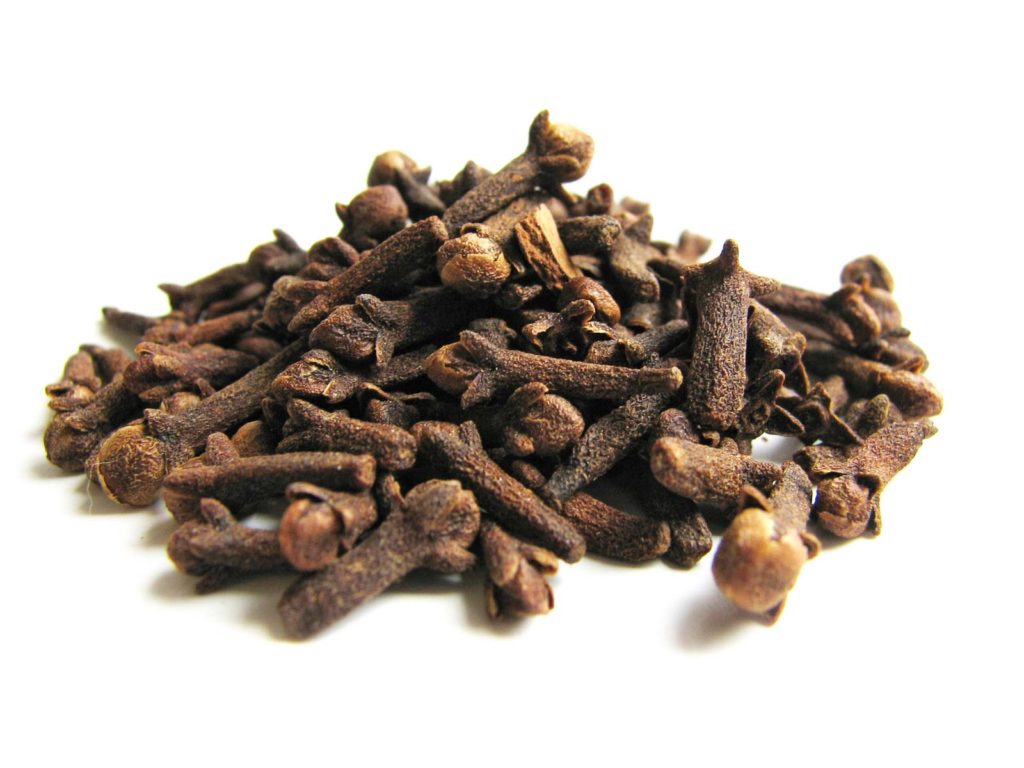
- Summary: Cloves are quite popular that i didn’t feel the need to explain what it is and tastes like since many know what it is. One thing I will like to advice is that cloves from Ghana are very strong so a little goes a long way. I hope you are seeing the theme here; a little of each spice goes a long way.
- What can I use it for? Like many of the spices, they can be used in both sweet and savoury. i put them in porridges and also in sauces. I love including it in my Jollof Rice recipe; it also gives a nice deep flavour to the groundnut soup. It is also great for baking. If you add nutmeg or cinnamon to a recipe, add some ground cloves.
- Sweet or Savoury? Both
- Recipe ideas: Any baked good as well as tomato based soups and sauces
- From my blog:
- Kelewele: (Click Here)
- Sobolo: (Click Here)
- Jollof Rice: (Click Here)
- Ghanaian Groundnut Soup: Click Here
Additional Information on Spices
- Storing ? Store in a cool dry place to maintain flavour. I will transfer the spices in the bags to an air tight container just to maintain freshness. I will also keep the spices whole until you are ready to cook with them
- Equipment? I highly suggest getting a coffee grinder or mortar and pestle to grind some of these spices. For example, the calabash nutmeg needs to be cracked and a mortar and pestle is perfect for that. I use a coffee grinder to grind the spices together if i want a fine powder. if you are using the spices in Jollof or any tomato based soup or stew that requires blending, pop the spices in with everything that needs to be blended and blend it all together
- Using the spices? When you are ready to cook, I will suggest using a mortar and pestle to grind the spices. For the calabash nutmeg, make sure you have removed the shell before grinding it with other spices. For the grains of selim, you can crush them too with a mortar and pestle but it will be hard to get as smooth. I suggest adding it to your other spices, if you chose to grind it (which I do not advice doing for more than 2 grains of selim) and grinding with a coffee grinder. Usually helps to break it down well
I will be updating the post on a regular basis to update recipe links using some of these ingredients.

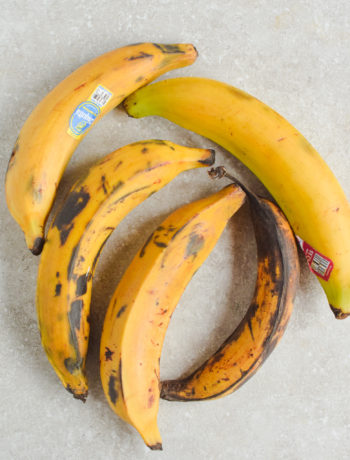
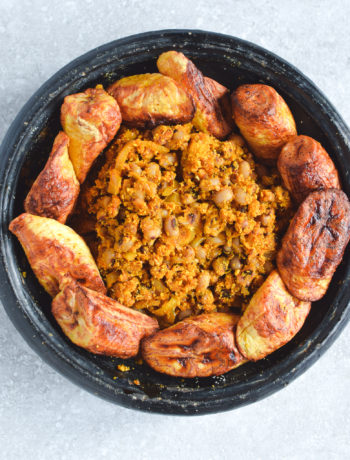
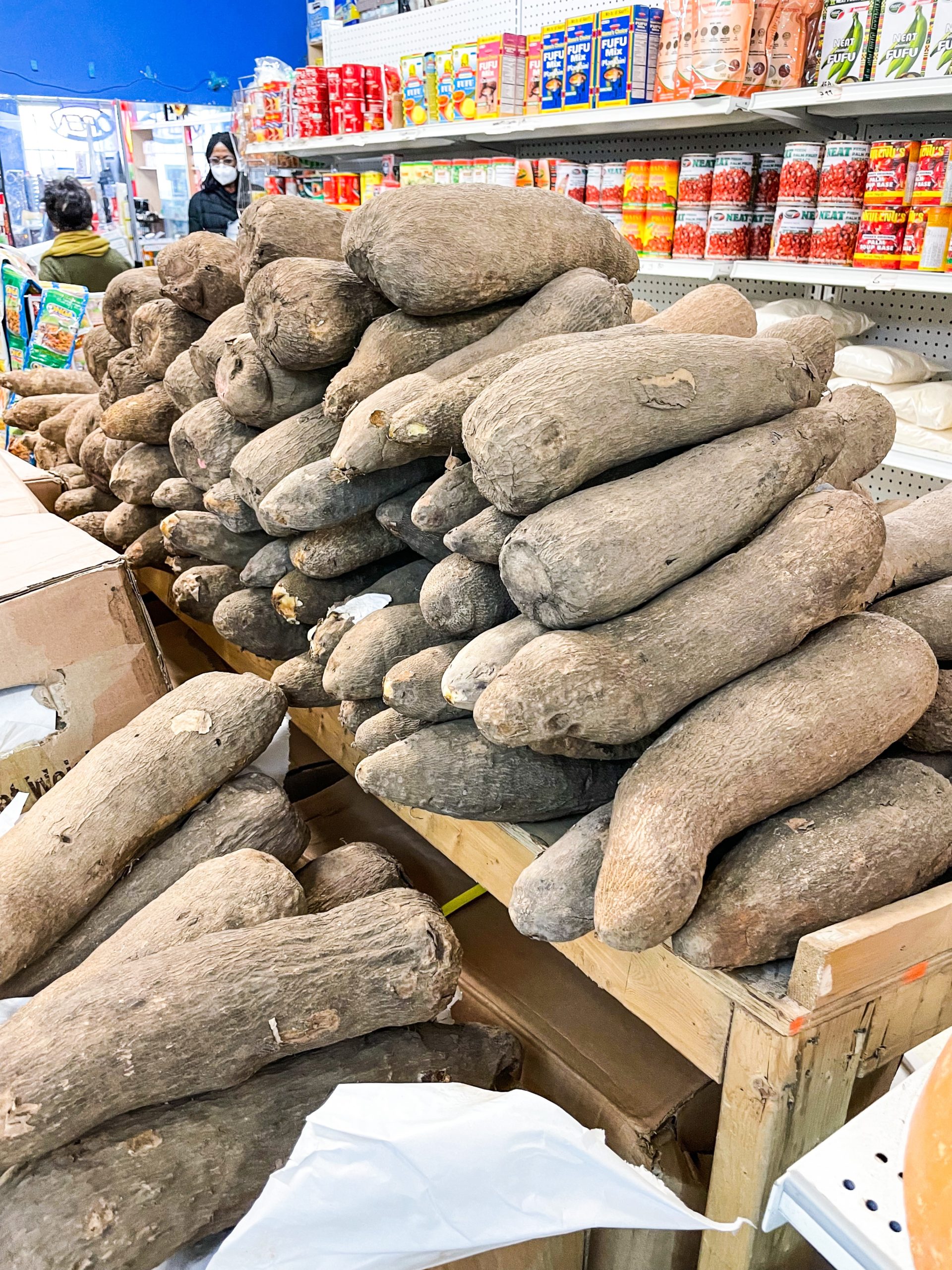
17 Comments
Less Popular Jollof Rice Recipes you Need To Know About - The Canadian African
April 13, 2021 at 12:13 am[…] like grains of selim and calabash nutmeg. For more details on local spices, please check out this blog post. The jollof is prepared just like you would ghana jollof. However, you will substitute vegetable […]
Fully Vegan Traditional Ghanaian Breakfast - The Canadian African
August 18, 2021 at 8:02 pm[…] Spices: what makes hausa koko so unique is the use of indigenous spices to give it flavour. Hausa koko is flavoured with ginger and indigenous west african spices like grains of selim and calabash nutmeg. Obviously more common spices like cloves, black peppercorn and cayenne pepper are also used but nothing compares to the indigenous spices. If you want more info on indigenous West African spices, make sure to click here. […]
An Introduction to Ghanaian Food - The Canadian African
October 16, 2021 at 7:22 am[…] and everything in between. For more details about important Ghanain spices, please check out this link. In addition to indigenous spices, Ghanaians are very adventurous with spices. Stews, soups and […]
Frequently Asked Questions - The Canadian African
November 7, 2021 at 4:48 pm[…] check out my blog posts all on Important Ghanaian Spices (click here) and my post on an introduction to Ghanaian cuisine (click […]
Veyan One Pot Ayoyo Soup - The Canadian African
November 11, 2021 at 12:03 am[…] are wondering what these spices are, please check out my blog post on indigenous African spices (click here). I will not encourage substituting any of these because they are very unique flavours that give […]
Vegan Ghanaian Palm Nut Soup - The Canadian African
November 27, 2021 at 12:24 am[…] Dawa Dawa: . It provides a nice umami flavour and smell that kind of emulates meat. If you are in Canada and want to purchase some, you can use this affiliate link: click here. If you have an African stores around you, you NEED to make a trip. More details about dawa dawa can be found here. […]
The Canadian African Holiday Gift Guide - The Canadian African
November 29, 2021 at 3:55 am[…] If you have questions about Ghanaian spices, you can check out this blog Post: Important Ghanaian spices […]
Spice Crusted Tofu (Vegan) - The Canadian African
October 25, 2022 at 7:35 pm[…] Seasonings – you can use any seasoning of choice but as a certified Ghanaian woman, I reached out for the grains of paradise, the anise seeds, uziza seeds (Ashanti pepper), salt, black pepper and coriander seeds for that burst of flavour. For more details on West African spices, please check out my blog post on Important Ghanaian Spices (click here) […]
Three African Inspired Tofu Recipes - The Canadian African
December 1, 2022 at 4:10 am[…] and calabash nutmeg. For more details about indigenous spices, please check out this blog post (click here). This recipe is exclusive to my E-book, which includes 11 other Ghanaian inspired recipes […]
Sobolo: Spiced Hibiscus Drink - The Canadian African
December 7, 2022 at 12:58 am[…] Spices: Ghanaian sobolo tends to use a lot of spices compared to our other West African counterparts. The spices serve not only as flavour but also a ton of medicinal properties. These spices include grains of Selim, grains of paradise, African bird eye chilli and many more. For more info on Ghanaian spices, check out this blog post (click here) […]
Vegetarian Egusi Soup - The Canadian African
December 22, 2022 at 12:58 am[…] is the fermented locust beans/dawa dawa. For more details on iru, please check out my blog post on Important Spices. These add an authentic flavour and smell to the dish. I am also using a nori + mushroom blend as a […]
Vegetarian Light Soup - The Canadian African
February 10, 2023 at 11:53 pm[…] Seasoning: Kept this really simple with miso, vegetable bouillon paste and dawa dawa/iru […]
Vegetarian "Beef" Wellington - The Canadian African
February 13, 2023 at 9:24 pm[…] so we are packing in the West African spices. Fermented Locust beans (also known as dawa dawa), grains of paradise, and Negro pepper are the shining stars of this dish. They add savoriness and umami that is unique […]
Orange Paradise Cake (Vegan) - The Canadian African
February 23, 2023 at 7:57 pm[…] Grains of paradise (also known as Aframomum melegueta) is a member of the ginger family that includes cardamom and other varieties of Aframomum plants. In West Africa, the melegueta pepper is sharp, tart, and spicy. In Ethiopia, the close relative Aframomum corririma (originally from Tanzania) smells like cardamom with orange/lemon notes. Ethiopian spice blends like Berbere or even North African ras-el-hanout include these aframomum varieties. However, many people have lumped these two together. I was gifted a jar of “grains of paradise” (Korarima) from @burlapandbarrel (who sell fair trade single-origin spices), which served as the inspiration for this dish. It has similar profiles to cardamom, which pairs very well with citrus. […]
Spicy Peanut Cake (Vegan) - The Canadian African
February 28, 2023 at 9:31 pm[…] and Salt: The seasoning here, which is a mix of cayenne pepper, calabash nutmeg, cloves, and ginger adds a kick with a depth of […]
Ankit
August 23, 2023 at 8:18 pmIs there a Ghanian spice mix (like there’s Garam Masala from India) that has each of the above in the right proportions? If so, I’d like to consider trying it out.
thecanadianafrican
December 3, 2024 at 1:03 pmwe do not necessarily have established spices like garam masala or chai masala but you can make one with this recipe https://thecanadianafrican.com/2-essential-west-african-spice-blends/